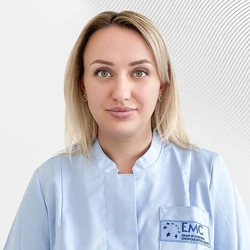Cryptorchidism is a common congenital anomaly in children, which is manifested by the absence of one or two testicles in the scrotum. This disease is most often caused by a violation of the intrauterine process of testicular prolapse.
During intrauterine development, the testicles form in the abdominal cavity and normally descend into the scrotum by the time of birth. The absence of a testicle in the scrotum is more common in premature newborn boys, in 10% of cases, than in full—term boys - 2-4%. Within six months after birth, the testicles may spontaneously descend into the scrotum. If this does not happen, then it is necessary to consult a specialist, since the longer the testicle is in the abdominal cavity, the more the reproductive function is disrupted.
Types of cryptorchidism
There are several types of cryptorchidism. Primary is when one or two testicles are missing from the scrotum at birth. Primary cryptorchidism in children can be abdominal, when the testicle is trapped in the abdominal cavity, and inguinal — the testicle is located in the inguinal canal.
It is also possible to develop secondary cryptorchidism. In this case, the testicles are located in the scrotum at birth, and then one or both testicles rise up. The mechanism is that the muscle pulls the testicle up and there it is fixed by spikes.
False cryptorchidism is a high position of one or both testicles, when the testicles descend into the scrotum with their hands and are located there for some time, and then rise again due to the increased tone of the muscle lifting the testicle. False cryptorchidism is often observed in obese children, it can be combined with underdevelopment of the scrotum and accompanied by a decrease in testicular function.
Causes of cryptorchidism
The exact causes of cryptorchidism are not known. The main risk factors are endocrine disorders in the mother, abnormalities in the development of the inguinal canal and ligamentous apparatus of the testicles in the embryo. In some cases, the development of cryptorchidism is associated with genetic mutations. Premature birth and prematurity of the fetus significantly increase the likelihood of developing cryptorchidism.
Consequences of cryptorchidism:
- Severe aching pains in the groin and/or abdominal area.
- Increased risk of testicular cancer.
- Severe reproductive dysfunction, infertility.
- Twisting of an undescended testicle and, as a result, its death.
- The risk of injury to the reproductive gland.
Diagnostic methods for cryptorchidism
First of all, specialists perform an examination and palpation of the scrotum. In some cases, the testicle is found in the inguinal canal, where it is quite mobile and easily moves into the scrotum. If the testicle is located in the abdominal cavity, then it will not be possible to detect it on palpation. In such cases, ultrasound of the abdominal cavity is prescribed.
In severe situations, when ultrasound is not informative enough, it may be necessary to perform MRI and CT using contrast. Laparoscopic surgery is sometimes performed to diagnose cryptorchidism to confirm abdominal testicular retention. At the EMC Urology Clinic, we were the first in Russia to perform robot-assisted surgical procedures for the diagnosis and treatment of children. This allows you to perform manipulations with minimal injury without any complications.
Treatment methods for cryptorchidism
The treatment method in each specific case is selected individually, depending on the form of cryptorchidism. In some cases, conservative treatment is sufficient — hormone therapy, but most often surgery is necessary.
In the abdominal form of cryptorchidism, when the testicle is in the abdominal cavity, the testicle is lowered into the scrotum using a laparoscopic method and fixed there. In some cases, such an operation can be performed using endoscopic techniques. Penetrating into the abdominal cavity through the natural pathways.
The urologists of the European Medical Center were the first in Russia to perform robot-assisted operations for children. The main advantages of the robotic method are low injury, minimal blood loss (up to 10 ml), a short period of hospitalization and rehabilitation, the ability to perform nerve—saving surgery and maintain potency in the future.
Was this information helpful?
Questions and answers
Ask a Question













.webp)




.webp)







